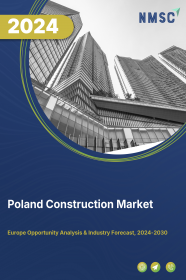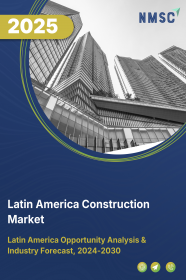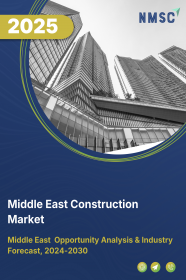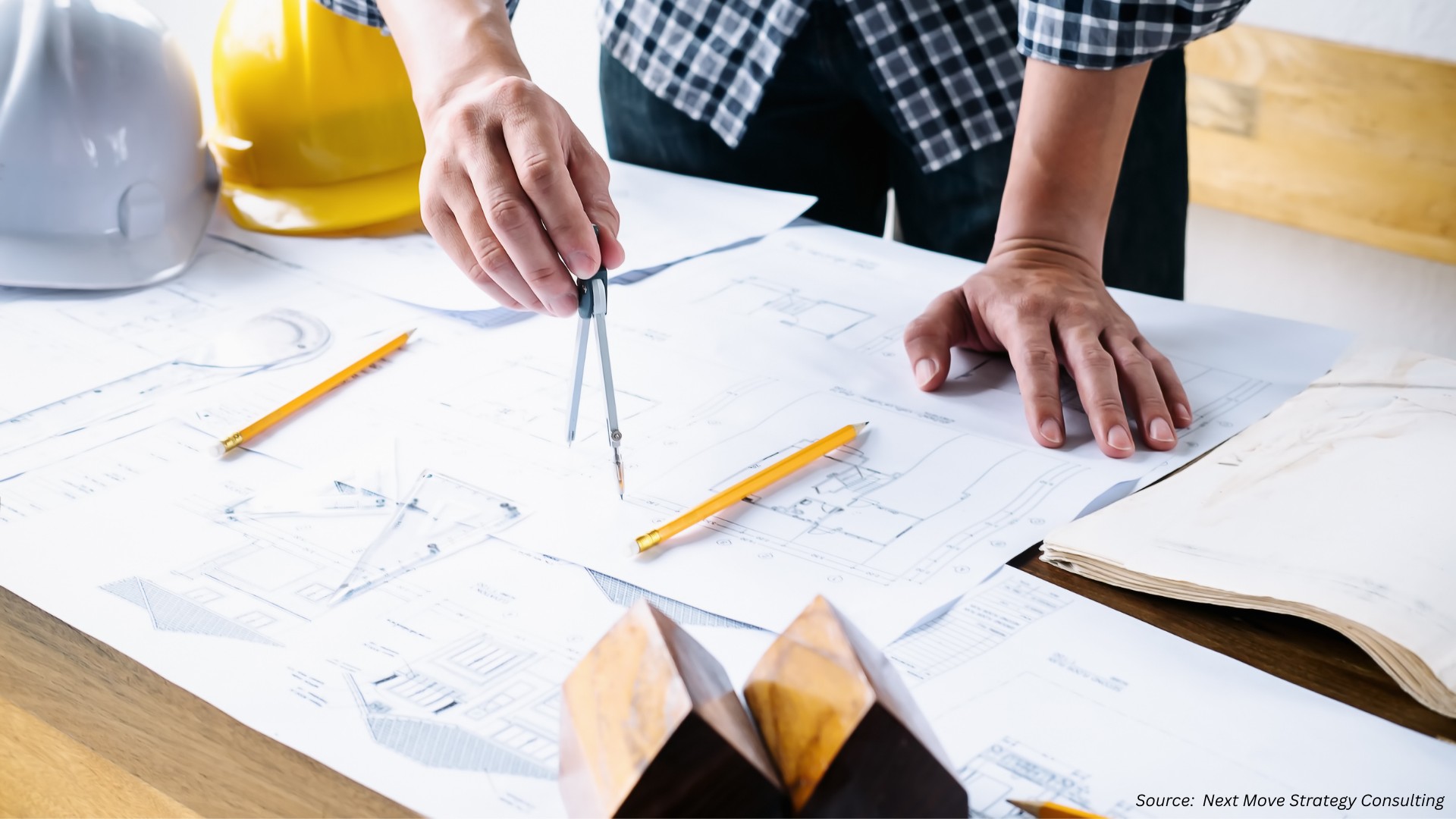
Poland Construction Market by Type, (Renovation, New Construction), by Sector, (Real Estate, Infrastructure, Industrial), by Construction Method, (Traditional Construction, Prefabricated/modular Construction, 3d-printed Construction, Green/sustainable Construction), by Type Of Contractor, (Large Contractor, Medium Contractor, Small Contractor) – Industry Trends and Forecast, 2025–2030
Industry: Construction & Manufacturing | Publish Date: 06-Sep-2025 | No of Pages: 85 | No. of Tables: 117 | No. of Figures: 62 | Format: PDF | Report Code : CM2213
Industry Overview
The Poland Construction Market size was valued at USD 21.06 billion in 2024 and is projected to grow to USD 22.60 billion by 2025. Additionally, the industry is expected to continue its growth trajectory, reaching USD 32.15 billion by 2030, with a CAGR of 7.30% from 2025 to 2030.
The Poland construction market is experiencing strong growth, driven by substantial investments in large-scale projects and infrastructure development, such as the Rybnik Gas Fired Power Plant and various transportation upgrades. This surge in investments, particularly in energy and telecommunications, is fueling continued market expansion.
However, the sector faces challenges from complex regulatory frameworks, including lengthy permit acquisition processes and varying regulations across jurisdictions, which can delay projects and increase costs. Despite these hurdles, the growing adoption of Building Information Modeling (BIM) and technologies like AI, IoT, and cloud solutions is creating new opportunities for enhanced project execution, collaboration, and efficiency, further supporting the market's positive trajectory.
Rapid Digital Transformation Optimizes Project Execution
Poland's construction sector is undergoing a significant digital transformation, driven by the increasing adoption of advanced technologies such as Building Information Modeling (BIM), digital twins, and cloud-based project collaboration platforms. These tools enable real-time synchronization of design, scheduling, and budgeting, thereby minimizing errors and accelerating decision-making. The integration of automation technologies, including AI-driven site management and drone-based surveying, is further enhancing operational efficiency. As developers and contractors embrace data-centric workflows, projects are being executed with greater speed, accuracy, and transparency—especially in large-scale infrastructure and urban regeneration efforts.
Workforce Modernization Through Targeted Training Initiatives
The Polish construction industry is actively investing in human capital to bridge the skills gap and future-proof the workforce. Sector stakeholders—ranging from vocational schools to major contractors—are collaborating to launch tailored training programs focused on digital competencies, sustainable building practices, and modular construction techniques. Immersive learning tools, such as virtual reality (VR) simulators and hands-on apprenticeships, are being employed to accelerate the learning curve. These initiatives are fostering a more agile and tech-ready labor force, essential for adopting evolving construction methodologies and meeting the demands of complex, tech-driven projects.
Fragmented Regulations and Bureaucratic Complexities
Despite Poland's construction momentum, regulatory fragmentation remains a significant impediment to timely project delivery. Disparities in planning laws, zoning criteria, and building code interpretations across local jurisdictions create inconsistencies that slow down permitting and compliance processes. Lengthy administrative approvals and shifting environmental regulations further complicate project timelines, particularly for large infrastructure or redevelopment ventures. These procedural hurdles not only delay execution but also raise operational costs and deter private investment, making it difficult to maintain pipeline momentum in strategic growth corridors.
Smart Construction and Prefabrication Redefine Market Potential
Poland is uniquely positioned to capitalize on the global shift toward intelligent construction practices. The increasing integration of smart technologies—such as IoT-enabled equipment, AI-based quality control, and energy-efficient building systems—is driving next-generation development across urban and suburban landscapes. Moreover, the rise of offsite manufacturing and prefabricated modular solutions is streamlining construction cycles, improving build quality, and reducing environmental footprint. With supportive policy measures and growing investor appetite for sustainable and tech-forward infrastructure, Poland is emerging as a hub for future-ready construction that aligns with global standards in efficiency, innovation, and environmental performance.
Competitive Landscape
The market players operating in the Poland construction industry include Skanska Poland, Budimex S.A, Strabag Polska, VINCI Construction Polska, Mostostal Warszawa S.A, PORR S.A, Polimex-Mostostal S.A, HOCHTIEF Polska S.A, Erbud S.A, Mirbud S.A, Unibep S.A, Dekpol S.A, Kajima Poland Sp. Z O.o, Interbud-Lublin S.A., Goldbeck Polska Sp. Z O.o
Poland Construction Market Key Segments
By Type
-
Renovation
-
New Construction
By Sector
-
Real Estate
-
Residential
-
Affordable
-
Luxury
-
-
Commercial
-
Retail Buildings
-
Office Buildings
-
Hospitality
-
Healthcare Facilities
-
Educational Institutes
-
Entertainment Ventures
-
-
-
Infrastructure
-
Transportation
-
Airport
-
Port
-
Rail
-
Road
-
-
Water and Wastewater
-
Energy
-
Telecommunication
-
-
Industrial
-
Manufacturing Plant
-
Warehouses
-
Power Plants
-
Oil Refineries
-
Chemical Plants
-
By Construction Method
-
Traditional Construction
-
Prefabricated/Modular Construction
-
3D-Printed Construction
-
Green/Sustainable Construction
By Type of Contractor
-
Large Contractor
-
Medium Contractor
-
Small Contractor
Key Players
-
Skanska Poland
-
Budimex S.A.
-
Strabag Polska
-
VINCI Construction Polska
-
Mostostal Warszawa S.A.
-
PORR S.A.
-
Polimex-Mostostal S.A.
-
HOCHTIEF Polska S.A.
-
Erbud S.A.
-
Mirbud S.A.
-
Unibep S.A.
-
Dekpol S.A.
-
Kajima Poland Sp. Z O.o.
-
Interbud-Lublin S.A.
-
Goldbeck Polska Sp. Z O.o
REPORT SCOPE AND SEGMENTATION:
|
Parameters |
Details |
|
Market Size in 2024 |
USD 21.06 Billion |
|
Revenue Forecast in 2030 |
USD 32.15 Billion |
|
Growth Rate |
CAGR of 7.30% from 2025 to 2030 |
|
Analysis Period |
2024–2030 |
|
Base Year Considered |
2024 |
|
Forecast Period |
2025–2030 |
|
Market Size Estimation |
Billion (USD) |
|
Growth Factors |
|
|
Companies Profiled |
15 |
|
Market Share |
Available for 10 companies |
|
Customization Scope |
Free customization (equivalent up to 80 working hours of analysts) after purchase. Addition or alteration to country, regional, and segment scope. |
|
Pricing and Purchase Options |
Avail customized purchase options to meet your exact research needs. |

















 Speak to Our Analyst
Speak to Our Analyst

























